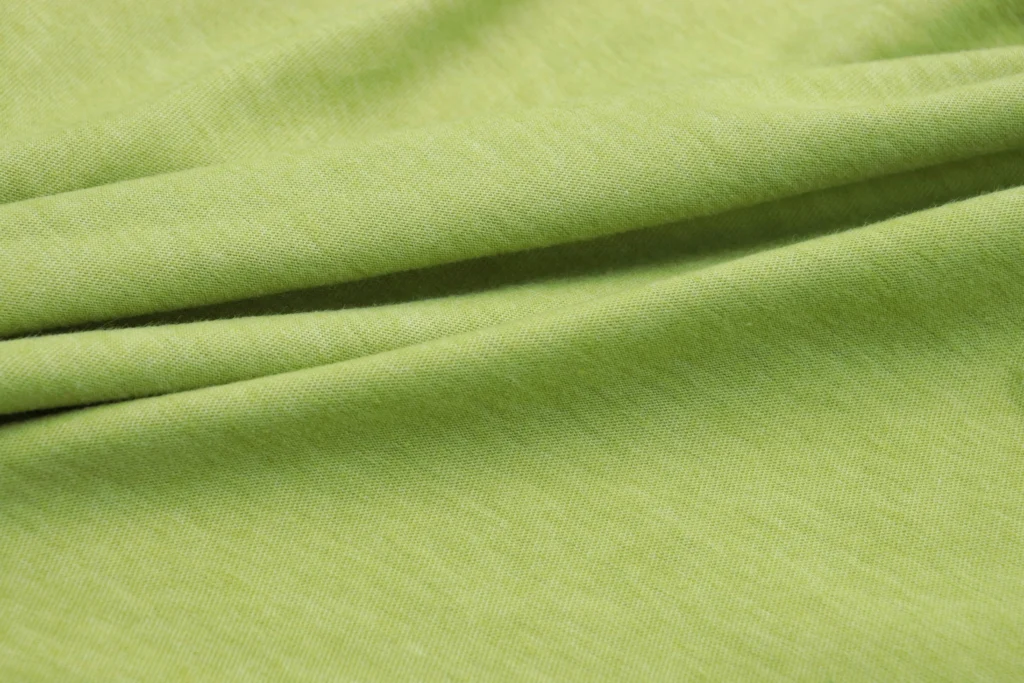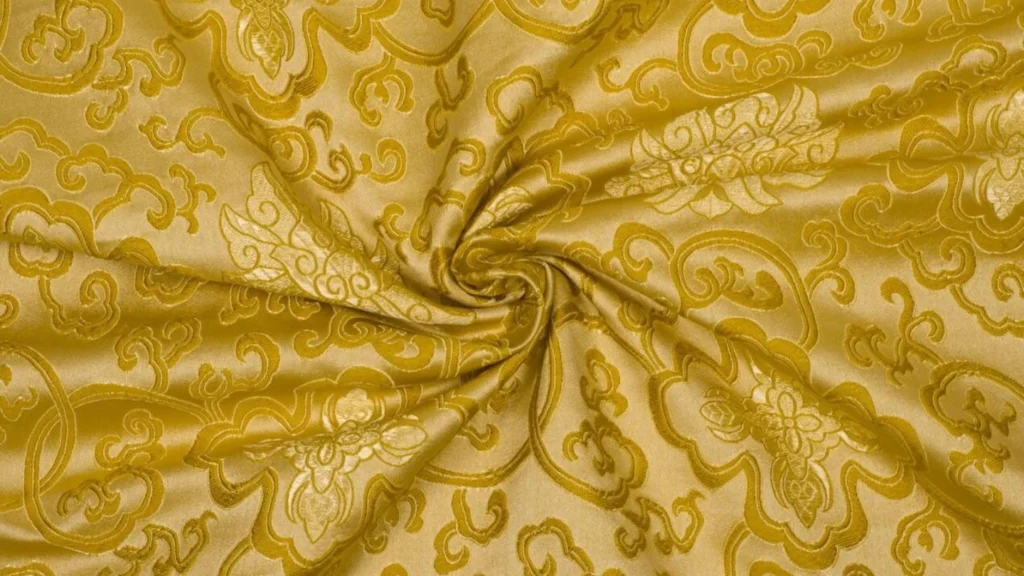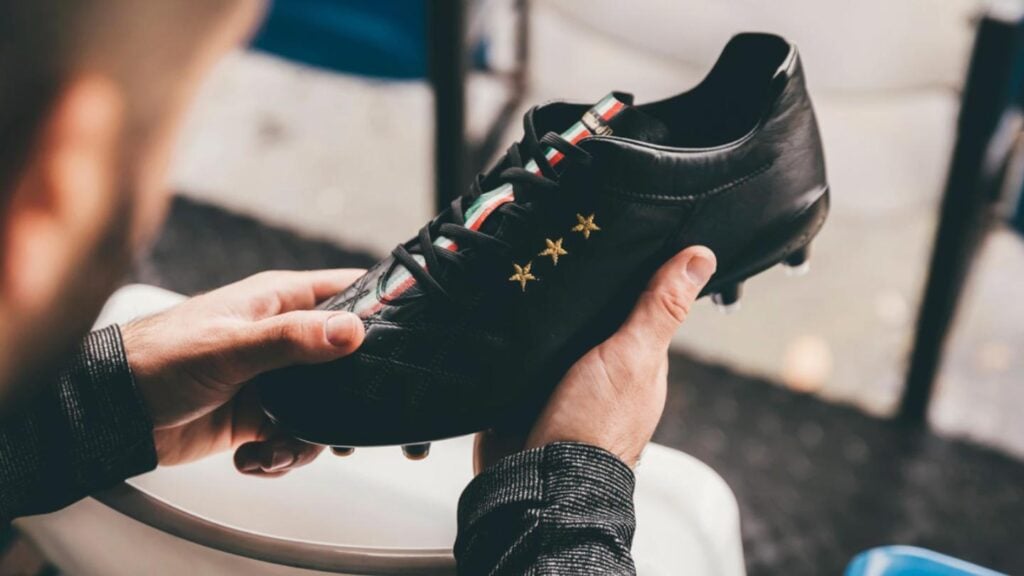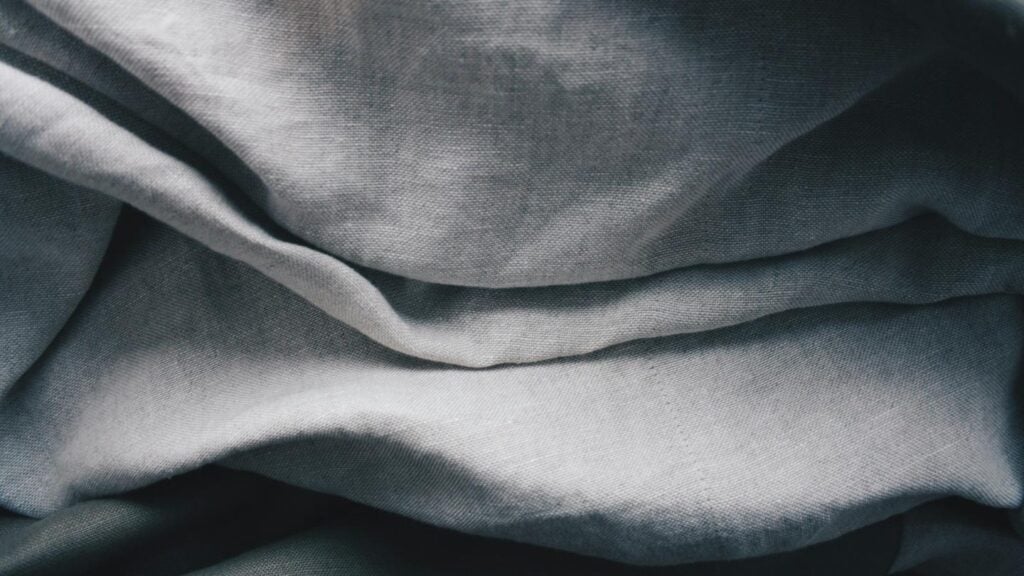2 – Microfibre Fabric Composition
3 – Microfibre Fabric vs Other Fabrics
4 – How Microfibre Fabric Is Manufactured
5 – Common Uses in Fashion
6 – Understanding the Environmental Impact of Microfibre Fabric
7 – Exploring Price Points and Value for Money
8 – Conclusion
9 – FAQs
What is Microfibre Fabric?
Microfibre fabric is a synthetic material made from extremely fine fibers, typically smaller than a human hair. These fibers are often made from polyester, nylon, or a combination of both. The term “microfibre” refers to the fiber diameter, which is usually less than 10 microns (1 micron being one-millionth of a meter), giving it unique properties compared to traditional fabrics. Due to its fine structure, microfibre fabric is known for its softness, lightweight feel, and high performance in various applications, ranging from fashion to cleaning products.
Microfibre is valued in many industries because of its high absorbency, durability, and breathability. It can absorb more moisture than its weight, which is why it’s commonly used in sportswear, towels, and cleaning cloths. The fine nature of the fibers allows microfibre to trap dirt and dust particles efficiently, making it an excellent choice for cleaning and household products.

Key Features of Microfibre Fabric:
- Ultra-fine fibers: Each fiber is finer than a human hair, contributing to its softness and flexibility.
- High absorbency: Microfibre can hold many times its weight in water, making it ideal for moisture-wicking fabrics.
- Durability: Despite its lightweight feel, microfibre is strong, resistant to wear, and maintains its quality over time.
- Breathability: The fabric allows air to circulate, making it comfortable for use in clothing, especially activewear.
While microfibre fabric is most well-known for its use in cleaning products and apparel, its versatility continues to drive innovation across various industries. In the following sections, we’ll explore its origin, composition, and properties in detail to understand how it has become such an integral part of modern textiles.
Microfibre Fabric Composition
The unique properties of microfibre fabric stem from the fibers used in its composition. Unlike traditional fabrics, which use thicker yarns, microfibre fabric is made from extremely fine synthetic fibers, typically composed of polyester and nylon, although some blends may include polypropylene and other synthetic materials.
Key Components of Microfibre Fabric:
- Polyester:
Polyester is the most common material used in microfibre fabric. It is durable, moisture-wicking, and quick-drying, making it ideal for high-performance applications like sportswear and activewear. Polyester also contributes to microfibre’s strength and resilience, enabling it to withstand frequent use and washing. - Nylon:
Nylon is another common component, adding flexibility, smoothness, and elasticity to microfibre fabric. Nylon-based microfibre is soft, yet strong, and provides a silky feel, which is why it’s often used in fashion items like clothing and accessories. - Blends of Polyester and Nylon:
Many microfibre fabrics combine both polyester and nylon, enhancing the fabric’s performance and versatility. This blend offers the moisture-wicking properties of polyester and the smooth, soft texture of nylon, making it suitable for a wide range of uses from cleaning cloths to activewear. - Polypropylene (in some cases):
Polypropylene is sometimes used in microfibre production for its hydrophobic properties, helping the fabric to repel water and making it more resistant to dirt and stains.

How Composition Affects Performance:
- Softness: The fine size of the fibers, especially when made from nylon, gives microfibre fabric its luxurious softness and smooth texture.
- Absorbency: Microfibre fabric can absorb up to seven times its weight in water due to the high number of tiny fibers in the fabric. This makes it perfect for towels, sportswear, and cleaning materials.
- Durability: The use of synthetic fibers like polyester and nylon makes microfibre fabric incredibly durable, resistant to wear and tear, and long-lasting.
- Breathability: The fine structure allows for air to flow through, making the fabric breathable and comfortable, especially in clothing and activewear.
The composition of microfibre fabric ensures that it combines the best qualities of both polyester and nylon, making it a highly versatile and high-performance material for a range of applications.
Microfibre Fabric vs Other Fabrics
Microfibre fabric offers unique advantages compared to cotton, polyester, and nylon, making it ideal for various applications.
Microfibre Fabric vs Cotton
- Cotton is breathable and soft but can be heavy and slow to dry.
- Microfibre is lighter, quicker-drying, and more absorbent. It resists wrinkles better but is synthetic and less biodegradable than cotton.
Microfibre Fabric vs Polyester
- Polyester is durable and quick-drying but can feel rough.
- Microfibre is made from polyester but is softer, more breathable, and has better moisture-wicking properties.
Microfibre Fabric vs Nylon
- Nylon is strong, elastic, and durable.
- Microfibre made from nylon is softer, more absorbent, and offers superior comfort and performance in clothing and cleaning products.

Microfibre fabric is typically softer, more absorbent, and breathable than polyester and nylon, and it outperforms cotton in moisture management and drying speed.
How Microfibre Fabric Is Manufactured
Key Steps in Manufacturing Microfibre Fabric:
- Fiber Creation
The process begins with the production of ultra-fine fibers, usually made from polyester or nylon. These fibers are drawn through tiny nozzles, often using advanced spinning or extrusion techniques to create fibers thinner than 10 microns in diameter. - Weaving or Knitting
Once the fibers are created, they are woven or knitted into fabric. The weaving process ensures that the fibers are tightly interlaced, which increases the fabric’s strength and texture. Knitting allows for more flexibility, making the fabric softer and stretchier. - Finishing
After the fabric is woven or knitted, it goes through finishing treatments to enhance its performance. This may include dyeing, softening, or applying water-repellent treatments. The fabric may also be brushed to increase its absorbency and give it a smoother feel. - Quality Control
The final fabric is rigorously tested for consistency in texture, absorbency, and strength. This ensures that the fabric maintains its performance over time, even with frequent use.

The production of microfibre fabric involves a specialized process that focuses on creating extremely fine synthetic fibers. These fibers are smaller than a human hair, giving the fabric its unique qualities of softness, durability, and high absorbency.
Benefits of the Manufacturing Process:
- Durability: Despite being lightweight, microfibre fabric is strong and resistant to wear.
- High Performance: The fine fibers allow it to trap dirt, absorb moisture, and provide breathability.
- Eco-Friendly: While synthetic, microfibre production uses fewer resources and chemicals compared to some other materials.
This manufacturing process makes microfibre fabric ideal for a variety of uses, from sportswear and activewear to cleaning products.
Produce your fashion collection with us
Common Uses in Fashion
Microfibre fabric is known for its versatility and is widely used in fashion due to its softness, durability, and excellent moisture-wicking properties. Its ability to combine comfort with performance makes it ideal for various applications.
Popular Applications of Microfibre Fabric in Fashion:
- Sportswear and Activewear:
Microfibre fabric is often used in athletic wear like t-shirts, leggings, and sports bras due to its ability to wick moisture away from the body and keep the wearer dry and comfortable during physical activity. - Outerwear:
Lightweight microfibre fabric is frequently used in jackets and coats, especially for those requiring water resistance or breathability. Its ability to handle both warmth and moisture makes it perfect for raincoats or windbreakers. - Home Textiles:
Microfibre fabric is used in upholstery for its soft texture and durability, as well as in curtains and bedding. It is easy to clean, making it an attractive option for home textiles. - Accessories:
Microfibre is used in bags, wallets, and footwear, where its smooth texture and flexibility combine with its ability to resist wear and tear.

Why Choose Microfibre Fabric in Fashion?
- Softness: The fine fibers provide a soft, comfortable feel against the skin.
- Durability: Microfibre is known for its ability to withstand frequent use, making it suitable for both fashion and function.
- Breathability and Moisture-Wicking: Its breathability makes it ideal for activewear, keeping you cool and dry.
Overall, Microfibre fabric is a popular choice in fashion for its versatility, comfort, and performance, making it suitable for everything from sportswear to luxury accessories.
Understanding the Environmental Impact of Microfibre Fabric
Microfibre fabric offers great performance but comes with some environmental challenges, especially regarding its synthetic fibers.
Key Environmental Concerns:
- Microplastic Pollution: Microfibre fabric sheds tiny fibers when washed, contributing to plastic pollution in water systems.
- Energy-Intensive Production: Creating synthetic fibers like polyester and nylon requires significant energy and resources.
- Non-Biodegradable: Microfibre fabric is non-biodegradable, meaning it does not decompose naturally.
Sustainable Solutions:
- Recycled Materials: Using recycled polyester or nylon helps reduce the environmental impact.
- Eco-friendly Washing: Solutions like filters for washing machines can capture microfibres before they enter the water system.
- Natural Fiber Microfibres: Alternatives made from natural fibers are being explored for better sustainability.

While Microfibre fabric has environmental challenges, efforts to improve sustainability are making it a more eco-friendly option.
Exploring Price Points and Value for Money
Microfibre fabric offers a range of price points depending on the composition, manufacturing process, and brand. It’s often more affordable than luxury fabrics like silk, making it an appealing option for both consumers and manufacturers.
Key Price Factors:
- Material Composition: Fabrics made from recycled polyester or nylon may cost more than standard microfibre but offer environmental benefits.
- Manufacturing Process: Fabrics with advanced technology (e.g., moisture-wicking or anti-microbial properties) may be priced higher due to the added performance benefits.
- Brand and Quality: High-end brands may price their microfibre fabrics higher due to quality and branding, while generic options remain more affordable.
Value for Money:
- Durability: Microfibre fabric is long-lasting and resistant to wear, making it a great investment for items that see frequent use, like sportswear or cleaning cloths.
- Performance: Offering excellent moisture-wicking, comfort, and versatility, microfibre is often worth the price, especially when compared to other synthetic or natural fabrics.
Microfibre fabric strikes a good balance between affordability, performance, and durability, making it a value-for-money choice for everyday and specialized products.
Conclusion
Microfibre fabric is a versatile and high-performance material known for its softness, durability, and moisture-wicking properties. While it is primarily used in sportswear, activewear, and cleaning products, its affordability and long-lasting durability make it an attractive choice across various industries.
Despite its environmental challenges, such as microplastic pollution and synthetic fiber production, efforts to improve sustainability, such as recycled materials and eco-friendly washing solutions, are helping to reduce its impact. Microfibre fabric continues to be a cost-effective and reliable option for both everyday wear and specialized use, making it an important fabric in modern textiles.
FAQs
1. What is microfibre fabric?
Microfibre fabric is a synthetic material made from extremely fine fibers, usually polyester or nylon, which makes it soft, lightweight, and highly absorbent.
2. What is microfibre fabric used for?
Microfibre fabric is used in a variety of applications, including sportswear, activewear, cleaning cloths, upholstery, and bedding due to its softness, durability, and moisture-wicking properties.
3. How is microfibre fabric made?
Microfibre fabric is made by drawing extremely fine fibers from synthetic materials like polyester and nylon. These fibers are then woven or knitted into fabric, which is often treated with finishing processes to enhance its performance.
4. Is microfibre fabric eco-friendly?
While microfibre fabric offers excellent performance, it does have some environmental challenges, particularly with microplastic pollution. However, sustainable alternatives like recycled polyester and eco-friendly washing methods are helping to mitigate these concerns.
5. How do I care for microfibre fabric?
Microfibre fabric is easy to care for. It is machine washable and quick-drying, but should be washed on a gentle cycle to maintain its quality. Avoid fabric softeners, as they can affect the fabric’s performance.
6. Does microfibre fabric shed fibers?
Yes, microfibre fabric can shed tiny fibers during washing, contributing to microplastic pollution. Using filters in washing machines and washing microfibre items less frequently can help reduce shedding.
7. Is microfibre fabric durable?
Yes, microfibre is highly durable, resistant to wear, and maintains its quality even after frequent washing. Its resilience makes it ideal for high-usage items like sportswear and cleaning products.
8. Can microfibre fabric be used in outdoor wear?
Yes, microfibre fabric is commonly used in outdoor wear due to its breathability, moisture-wicking abilities, and lightweight nature, making it ideal for jackets, pants, and active clothing.
9. What’s the difference between microfibre and polyester?
While both materials are synthetic, microfibre fabric is made from ultra-fine polyester or nylon fibers, which gives it superior softness, absorbency, and flexibility compared to standard polyester fabrics.
10. Is microfibre fabric suitable for sensitive skin?
Yes, microfibre fabric is generally hypoallergenic and gentle on the skin, making it suitable for sensitive skin, especially when used in clothing.







